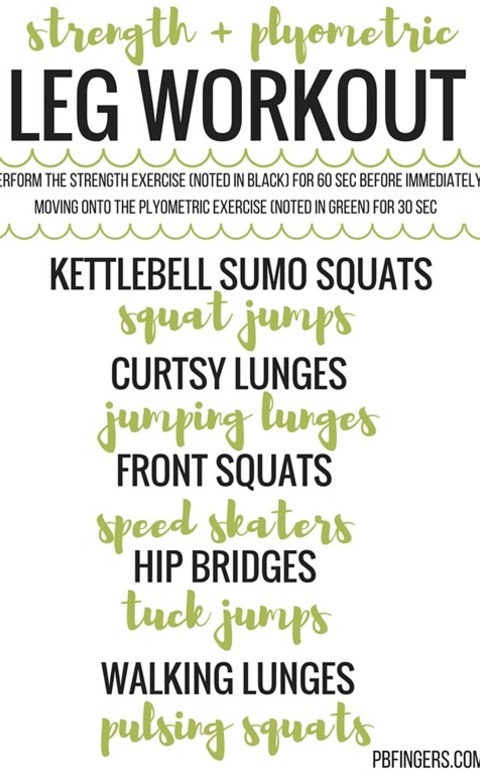#plyometrics leg workouts
Text
Marathon Recovery: Strategies for Achieving Your Goals
Marathon recovery is the crucial process post-race that aids runners in rejuvenating their bodies. It involves a combination of rest, nutrition, and active strategies to heal and rebuild. Proper hydration and replenishing lost nutrients are paramount, promoting muscle repair and minimizing soreness. Gentle stretching and low-impact exercises enhance flexibility and circulation. Adequate sleep is vital for overall recovery, allowing the body to heal and adapt. Ice baths or compression garments can reduce inflammation. Gradual return to running with easy, short jogs prevents injury. Ultimately, marathon recovery is a holistic approach, prioritizing physical and mental recuperation, ensuring runners bounce back stronger.
#Marathon Recovery#Plyometrics Workout#plyometrics workouts for basketball#p90x plyometrics workouts#best plyometrics workouts#plyometrics workouts for runners#plyometrics workouts for speed#plyometrics workouts for volleyball#plyometrics workouts for jumping#plyometrics workouts for athletes#plyometrics workouts for strength#plyometrics workouts for soccer#what is plyometrics training#plyometrics workout basketball#plyometrics jumping exercises#plyometrics workout p90x#plyometrics leg workouts#plyometrics exercises examples#plyometrics training near me#plyometrics exercises definition#plyometrics training definition#plyometrics training examples#plyometrics workout for runners#plyometrics jump training#plyometrics workout routine
0 notes
Note
Hey man, I'm also a trans guy feeder, seems like there aren't many of us
Drop the workout routine + diet regimen please, I'm the same height and you are goals haha
Hi! I'm so glad you reached out, sometimes it feels like I'm the only one here, hah. Like there's so many transmasc feedees/gainers but tbh I can't remember seeing another trans feeder...
The workout routine uhhhh
First of all, I feel like the most important thing is to find a physical activity that's fun for you personally. I've been doing capoeira (Brazilian martial art) 2-3x a week for almost 7y and gradually started adding resistance training and plyometrics to that. Since I got my legs covered I only do plyo, squats and calves like once or twice a week but for a short amount of time.
Apart from that, I mostly do upper body. And I train at home abt 2-3x a week. 10-15reps and 3-4 series of pull-ups with different grips, bent rows (barbell or dumbbells), flys (mostly with resistance bands), arm raises for deltoideus, triceps extensions with resistance bands as well and so on, I like to mix things up and just have fun with what I'm doing. I do lots of things with resistance bands due to having a limited safe range of motions for my elbows but I'm very glad I found them, you can take them anywhere with you, they don't cost much and do their work! So that's sth I definitely can recommend! I've also been trying calisthenics lately but that uh I'm not great at haha but I'm having fun. The key is to not get bored :)
As for eating, I'm vegetarian, and sometimes it feels like I'm living on tofu and cottage cheese to get my proteins. I think I might be about 70% tofu and 30% human at this point. And lots of water!
Thanks so much for the kind words! I'm trying my best and working my ass off sometimes and I'm so so happy it's starting to become visible 🦁🦁
Good luck!! I hope at least something I wrote down might be of use to you, feel free to reach out as well :)
3 notes
·
View notes
Text
10 Effective Body Exercise Tips to Tone Your Muscles Fast
Compound Exercises: Incorporating compound exercises into your routine is essential for overall muscle development. Compound exercises engage multiple muscle groups simultaneously, leading to more efficient workouts. Examples include squats, deadlifts, and bench presses. These exercises stimulate a higher number of muscle fibers, promoting faster muscle growth and toning.
High-Intensity Interval Training (HIIT): HIIT is a powerful approach to burn calories and increase muscle definition. This form of exercise alternates between short bursts of intense activity and brief periods of rest. HIIT not only boosts your metabolism but also promotes the afterburn effect, where your body continues to burn calories post-exercise. This is highly effective for toning muscles and shedding excess body fat.
Targeted Isolation Exercises: While compound movements are crucial, incorporating isolation exercises allows you to focus on specific muscle groups. Targeted exercises such as bicep curls, tricep dips, and leg extensions can help isolate and define individual muscle groups, contributing to a more sculpted appearance.
Progressive Overload: To continuously challenge your muscles and encourage growth, it’s essential to progressively increase the resistance or intensity of your workouts. Gradually add more weight, increase the number of repetitions, or reduce rest periods. This progressive overload stimulates muscle adaptation, leading to increased tone and definition.
Varied Repetition Ranges: Incorporating a variety of repetition ranges into your workout routine is key to comprehensive muscle development. While lower rep ranges with heavier weights build strength, higher rep ranges with lighter weights enhance muscular endurance and definition. Including both in your training regimen ensures a balanced approach to muscle toning.
Incorporate Plyometric Exercises: Plyometric exercises involve explosive movements that engage your muscles and stimulate fast-twitch muscle fibers. Exercises like box jumps, burpees, and jump squats not only improve cardiovascular fitness but also contribute to muscle toning by promoting power and agility.
Focus on Core Strength: A strong core is fundamental for overall stability and body control. Incorporate exercises that target the core, such as planks, Russian twists, and bicycle crunches. A well-developed core not only enhances your posture but also contributes to a more toned and sculpted midsection.
Utilize Resistance Bands: Resistance bands are versatile tools that add resistance to your exercises, promoting muscle engagement. Whether you’re performing squats, lunges, or lateral raises, incorporating resistance bands increases the intensity of the movement, leading to better muscle toning.
Proper Nutrition and Hydration: Toning your muscles isn’t just about exercise; it also requires proper nutrition and hydration. Ensure you’re consuming an adequate amount of protein to support muscle repair and growth. Stay hydrated to optimize performance and aid in recovery. A balanced diet rich in nutrients fuels your workouts and promotes overall well-being.
Sufficient Rest and Recovery: Adequate rest is often overlooked but is crucial for muscle recovery and growth. Muscles need time to repair and adapt to the stress placed on them during workouts. Incorporate rest days into your weekly routine and prioritize quality sleep. This allows your body to recover, reducing the risk of overtraining and promoting optimal muscle tone.
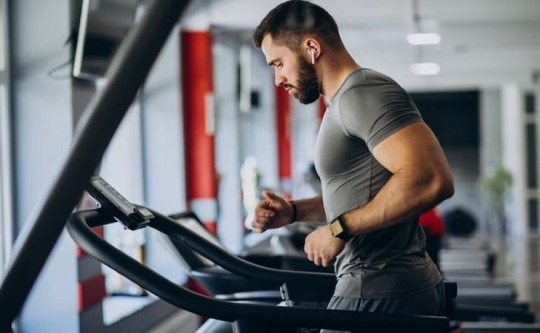
2 notes
·
View notes
Text
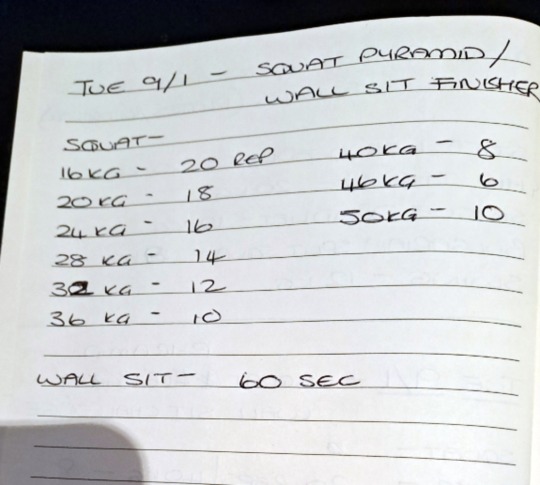
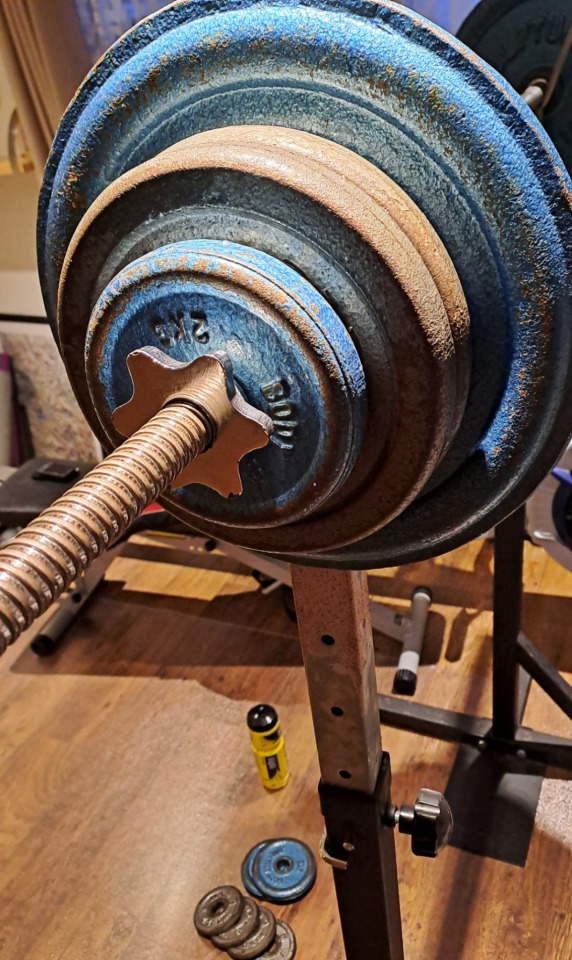





After a good start yesterday, it all fell apart very quickly.
Let's just say that tinned baked beans are most definitely OFF the menu from now on!
I had them for lunch on Sunday. And yesterday ....wow. I was a total mess.
I'm fine with legumes, but I'm pretty sure it was the gluten aspect. I'm already gluten free, but wasn't sure about those beans. Some brands are ok, some aren't.
Best to stay off them completely.
So I took the rest of the day off everything. Including a late snack. Felt ill.
Bit better this morning. Still not 100%, bit good enough to get on with my day.
I got myself into a squat workout. Low weight/high rep to high weight/low rep pyramid. Ending it with a ten rep push at the highest weight.
Then a minute's wall sit to finish my legs off completely, lol.
I was happy to get outside with my breakfast after that. All hail the Oodie and the insulated cup!
And made even better with such a beautiful morning sky.
I'm going for a little walk in the forest before lunch, but before that, I pushed myself into getting on with some cardio HIIT.
Oof. Yeah, that was a toughie!
Lots of plyometrics in that one!!
Glad I got it in, though.
#fitspo#fitspiration#fitblr#fitness#healthy living#health and fitness#fit#workout#fiton#suzieb-fit#hiittraining#cardiovascular health#weight training#leg day#leg strength#leg training#leg workout#circadian rhythm#high intensity interval training
6 notes
·
View notes
Text
The Grown-Up’s Guide to Sprinting
I’ve seen a statistic thrown around on the internet that 95% of adults over the age of 30 will never sprint again for the rest of their lives.
While these numbers are probably made up, they do capture something that I’ve noticed anecdotally: there aren’t many adults out there sprinting. Heck, if I look at my own life during the past decade, I haven’t done much all-out sprinting myself.
Sure, I’ve done HIIT work on an assault bike, burpees, and bodyweight exercises to get my heart rate up for conditioning, but bouts of running as fast as I can have been few and far between. I’ve sprinted in some ultimate frisbee games or while playing flag football with the boys I coach, but that’s about it.
The last time I did wind sprints as part of a workout was way back in 2016. It had been the first time in years I had run full speed for more than 40 yards. The result? I gave myself terrible tendonitis in my right hamstring that prevented me from squatting and deadlifting for about a month and made sitting down rather uncomfortable. It still bothers me now, seven years later.
After reading that statistic about how few adults sprint after age 30, I felt inspired to figure out a way to take up sprinting again without injuring myself. I want to be an old codger who can still sprint at full speed at age 75 (even if full speed at age 75 will be as fast as my slow jog is now).
Why?
First, I do enjoy playing sports that require sprinting. Ultimate frisbee, flag football, and basketball are some games I play where you sprint. I want to be able to continue to play these games with my kids and even my grandkids.
Second, sprinting is one of those physical skills that could save my life one day. I want to be able to run as fast as possible when my life depends on it without worrying I’ll blow my knees out.
Finally, sprinting is a great workout. You can do it anywhere, and it’s great for anaerobic conditioning. Sprinting can also strengthen lower leg muscles and tendons, enhancing your durability.
To help me get back into sprinting without injuring myself, I talked to Matt Tometz, Assistant Director of Olympic Sports Performance at Northwestern University.
Here’s your guide to sprinting as a grown-up.
Why You Get Injured When You Sprint
If you’ve tried sprinting as an adult after a long hiatus away from it, you may have experienced an injury like I did. While you might think it’s due primarily to age, injuries from sprinting occur frequently, even among elite athletes.
Sprinting is a high-impact, high-strain activity. You’re contracting your leg muscles repeatedly with a lot of force during the sprint. If the muscles and tendons in your legs haven’t been strengthened to handle those forceful, repeated contractions, you’re setting yourself up for a muscle strain or tendon injury.
“Think of a sprint as a one-rep max on a deadlift,” Matt told me. “You wouldn’t try deadlifting 405 pounds unless you progressively trained your way to lift that much. You’d just injure yourself if you tried deadlifting 405 pounds without training. The same thing goes with sprinting.”
Preparing Your Body for Sprinting
So, how do we prep our bodies for full-on sprints?
Matt recommends doing a warm-up before your workout that includes both plyometrics and reduced-intensity sprints:
Plyometrics. Matt likes to have his athletes do ankle jumps as part of their warm-up. “Jumping and doing plyos can help strengthen and prepare your hamstring muscles and tendons to deal with the extreme force and tension that’s going to occur when you sprint,” he says.
Matt recommends doing the following plyo exercise: Stand in place with your feet shoulder-width apart. Keeping your knees straight, jump off the ground. As your feet come off the ground, flex your ankles and pull your toes up as high as possible. Extend your ankles shortly before you come back to the floor and push the balls of your feet into the ground explosively. Jump again immediately.
“Do ten reps for a set of two. The goal is to be bouncy and… http://dlvr.it/SxMLBv
2 notes
·
View notes
Text
Ok so I workout at home and have plenty of gym equipment (adjustable free weights, a bench, bands etc) but I'm at this weird point where my lower body strength training mostly ends up being upper body because my upper body isn't strong enough to keep up with my lower body's weight needs. Therefore pilates with bands and body weight workouts like HIIT and plyometrics (jumping) actually do way more to target my legs than squats and deadlifts.
Like I'm only squatting 40lbs total max. because I need to hold the weights at my shoulders and I can't lift more than that. Not to mention I have small dainty hands that get fatigued from holding these heavy ass dumbells.
I know I should probably just go to a gym but I don't really want to and I guess I'll just do more pilates and body weight workouts for my lower body with maybe a full body workout once a week
6 notes
·
View notes
Photo

By incorporating cutting-edge techniques and innovative movements, each session becomes an exhilarating adventure where you challenge your limits and unlock untapped potential. From explosive plyometrics that ignite muscle fibers to targeted weightlifting exercises that chisel every curve, this comprehensive regimen leaves no stone unturned in its quest for perfection. Prepare yourself for an electrifying journey as you embark on Jacob Delara's Legs workout – a testament to dedication, precision, and unparalleled results in the realm of physical fitness mastery. Watch video https://www.youtube.com/watch?v=UBxD4L5zpr8
1 note
·
View note
Text
The best cardio exercises you can do at home
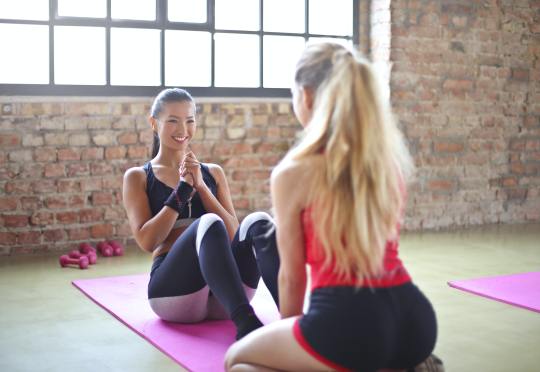
Cardiovascular exercise, commonly known as cardio, is a vital component of any fitness routine. It helps to improve heart and lung health, increase endurance, and burn calories. While many people prefer to hit the gym for their cardio workout, it is not always possible or practical. Fortunately, there are several effective cardio exercises that you can do at home without any equipment. In this article, we will discuss some of the best cardio exercises that you can do at home.
1. Jumping Jacks
Jumping jacks are a classic cardio exercise that requires no equipment and can be done anywhere. They help to improve cardiovascular fitness, work out the whole body, and are particularly effective for toning the legs and glutes. To perform a jumping jack, stand with your feet together, jump up while spreading your legs apart, and raise your arms overhead. Return to the starting position and repeat.
2.High Knees
High knees are another excellent cardio exercise that can be done at home. They help to improve cardiovascular endurance, burn calories, and work out the legs and core muscles. To perform a high knee, stand in place and raise your knees as high as possible, alternating between your legs. Move your arms as if you are running.
3. Burpees
Burpees are a full-body exercise that combines strength training with cardio. They help to improve cardiovascular endurance, build strength, and burn calories. To perform a burpee, start in a standing position, then jump and squat down, placing your hands on the ground. Kick your legs back into a push-up position, then bring them back to the squat position and jump up.
4.Mountain Climbers
Mountain climbers are a challenging but effective cardio exercise that can be done at home. They help to improve cardiovascular endurance, work out the core and leg muscles, and burn calories. To perform a mountain climber, start in a push-up position and bring one knee up to your chest, then switch to the other knee, alternating as quickly as possible.
5.Jump Rope
Jumping rope is a classic cardio exercise that can be done at home with a simple piece of equipment. It helps to improve cardiovascular endurance, burn calories, and work out the legs, arms, and core muscles. To jump rope, stand with your feet shoulder-width apart and swing the rope over your head, jumping over it as it passes under your feet.
6.Dancing
Dancing is a fun and effective way to get your heart rate up and burn calories. It helps to improve cardiovascular endurance, coordination, and balance. There are several dance styles to choose from, including hip hop, salsa, and aerobics.
7.Squat Jumps
Squat jumps are a high-intensity plyometric exercise that targets the legs, glutes, and core muscles, while also providing a cardiovascular workout. This explosive exercise involves jumping as high as possible after squatting down and can be done anywhere without equipment.
8.Running the Stairs
Running the stairs is a high-intensity cardio exercise that is often overlooked but can be an excellent way to improve cardiovascular endurance, build leg muscles, and burn calories. Whether you live in a multi-story building or have access to a public or outdoor staircase, incorporating stair running into your fitness routine can provide a challenging and effective workout. Running stairs is a weight-bearing exercise that engages more muscles than regular running or walking, making it a great way to build strength and endurance. It also increases the heart rate quickly, which can help to improve cardiovascular health and burn calories. In fact, running stairs burns more calories per minute than running on flat ground, making it an effective way to lose weight and improve overall fitness
In conclusion, there are several effective cardio exercises that you can do at home without any equipment. Incorporating these exercises into your fitness routine can help to improve cardiovascular health, increase endurance, and burn calories. It is essential to choose an exercise that you enjoy and can stick to in the long run. Always start with a warm-up and cool-down and listen to your body to avoid injury. With consistency and effort, you can achieve your fitness goals from the comfort of your own home.
#exercise#fitness#workout#gym#health#cardio#fat loos#exersices#cardio exercises#home workout#home exercises to lose weight#2023
5 notes
·
View notes
Text
Plyometrics Workout: The Key to Unlocking Your Fitness Potential
Plyometrics Workouts are dynamic, high-intensity exercises that focus on explosive movements. These routines are tailored for athletes, fitness enthusiasts, and individuals seeking to enhance their strength, speed, and agility. Incorporating plyometrics into your fitness regimen can lead to improved athletic performance, increased muscle strength, and enhanced cardiovascular fitness. From basketball players to runners, plyometrics workouts cater to a variety of sports and fitness goals. Whether you're a seasoned athlete looking to boost your game or a beginner aiming to jumpstart your fitness journey, plyometrics provides a challenging and effective path to reaching your fitness aspirations. Get ready to jump, leap, and power up with plyometrics!
#Plyometrics Workout#plyometrics workouts for basketball#p90x plyometrics workouts#best plyometrics workouts#plyometrics workouts for runners#plyometrics workouts for speed#plyometrics workouts for volleyball#plyometrics workouts for jumping#plyometrics workouts for athletes#plyometrics workouts for strength#plyometrics workouts for soccer#what is plyometrics training#plyometrics workout basketball#plyometrics jumping exercises#plyometrics workout p90x#plyometrics leg workouts#plyometrics exercises examples#plyometrics training near me#plyometrics exercises definition#plyometrics training definition#plyometrics training examples#plyometrics workout for runners#plyometrics jump training#plyometrics workout routine#plyo ball workouts#plyometrics training equipment#plyometrics hiit workout#how long should a plyometric workout be#plyometric leg workout for explosiveness#plyo jump workout
1 note
·
View note
Text
Top 10 Best Jumpsport 350i Fitness Trampoline (Reviews) for Exercise in 2022
Hello Friends, if you also don't get the time and your health is getting worse and you want me to be able to maintain good health at home without going out, then in this article I have told you about the 10 Jumpsport 350i Fitness Trampoline.
Must read the entire article that will help you improve your health. Because it will harm your people and your health may deteriorate. This article is just to improve your fitness. Select the fitness trampoline of your choice from the 10 Jumpsport 350i Fitness Trampolines given below so that your fitness will be better.
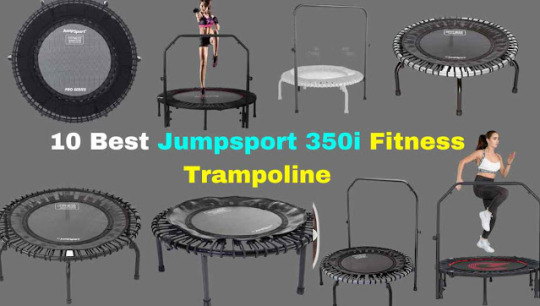
I love it! I have been jumping at my local park since I was young. I always wanted something bigger. Well, now I have finally got what I wanted. My trampoline is amazing! It is big enough to last me for many years to come.
It comes fully assembled, which means there are no screws to lose. You just need to put it together. Once it is done, you do not need any help putting it away. When you want to take it apart, you can click two tabs on each side of the pad and they come off easily.
The size of the jumpsport fitness trampoline 350i is perfect for adults, teenagers, and kids. With its size, everyone can enjoy it. Kids can run around while their parents relax in the shade. And if you get tired after jumping, you can easily lie down on the mat and rest. There is even a cup holder right on top of the mat to store drinks.
This jumpsport trampoline 350i is great for both indoor and outdoor use. With its durable steel frame, it is sturdy enough to handle heavy weights indoors. Plus, it is weatherproof, so you do not have to worry about bad weather.
Top 10 Best Jumpsport 350i Fitness Trampoline
Here I have told about the jumpsport 350i fitness trampoline separately in full detail, so read the fitness trampoline given below I believe it will help you.
1. JumpSport 350 Indoor Fitness Trampoline:
The Jumpsport 350i fitness trampoline is an inflatable trampoline designed specifically for indoor use. This jump sport trampoline is specially designed for fitness enthusiasts looking for a high-intensity workout without the risk of injury. It features three modes (jump, bounce, and balance) that allow users to perform a variety of workouts including cardio training, yoga, core training, bodyweight circuit training, plyometrics, and more.
2. Arched-Legged Fitness Trampoline
The Arched-Legged Fitness trampoline (ALFT) is a portable fitness platform designed specifically for active adults. Its unique design provides high-intensity cardio workouts while promoting muscle flexibility and balance.
3. JumpSport 220/250 in Home Cardio Fitness Rebounder
The JumpSport 220/250 in Home Cardio Fitness Rebounder is a great way to work out at home. It is an affordable and sturdy rebounder that offers a lot of benefits.
The JumpSport 220/250 in Home Cardio Fitness Rebounder is a great product for people who want to stay fit without leaving home. This rebounder provides many advantages, such as being affordable and sturdy, which makes it a great choice for those looking to stay fit without leaving the house.
You want something that's going to give you a total body workout from head to toe and get you in shape fast, but what if you don't have the time or money for a gym membership? The JumpSport 220/250 is all you need! With the latest technology and a durable design, this piece of equipment will help reach your fitness goals.
4. JumpSport 350/370 PRO-Indoor Heavy Duty Fitness Trampoline
This trampoline is great for fitness enthusiasts who want to get fit while bouncing around the house! JumpSport’s 350/370 Pro Indoor Fitness Trampoline features a unique design, making it durable and safe for use indoors.
It comes equipped with many safety features and is designed to last. In addition to its durability, the trampoline provides a smooth bounce that is perfect for exercise sessions.
A built-in digital timer lets users set their own workout time, while a battery backup ensures that usage continues even if the power goes out. Best yet, the trampoline easily folds up for storage.
5. 40/48" Foldable Mini Trampoline
The 40/48 Foldable mini trampoline is the smallest foldable trampoline in the world. Its unique shape makes it super easy to move around. Just unfold it once at home and take it anywhere! Great for kids and adults alike. Perfect for backyard fun!
More Read Click Here
#fitnesstrampoline#trampoline#minitrampolinefitness#minitrampoline#homefitness#minitrampolineworkout#toysgram#skateboardingbulldog#skateboardingindia#skateboardingvideos#gezondheid#trampolineworkout#skateboardingfails#rectangletrampoline#skateboarding#soumiestrampoline#soumies#outdoortoys#skateboardinguk#backyardfun#rebounder#rebounderworkout#skateboardinghistory#fitnessmotivation#trampolines#kangoojumps#instafit#workoutmotivation#workout
3 notes
·
View notes
Text
Is there anything more uplifting than a day at the beach? The bright sun, the rhythmic sound of the waves crashing to the shore, and the refreshing breeze instantly dissolve tension. Not only does the sand feel good in between your toes, but it sets the stage for a great beach workout. Exercising on sand has surprising benefits: It absorbs shock1, adds resistance, and works those often-neglected stability muscles. And while exercising isn���t the first thing most of us think of when planning a beach day, a beach workout can be fast and efficient, allowing you to jump in the water to cool off—and lounge in the sun right after with a sense of accomplishment. Whether you’re on a tropical vacation or enjoying the shoreline in the peak of summer, this full-body beach workout hits all of your muscles in a blink—no equipment needed. Why you should workout at the beach Nicole Winter, CPT, a certified personal trainer, five-time marathon runner, and Ladder strength training senior coach, tells us why we should get active at the beach. “When you are on the go and trying to squeeze in a quick workout while you are traveling or on vacation, these types of body weight movements can keep us feeling our best when we don't necessarily have access to a full gym.” Even if you could hit the gym, moving your body outside can prevent your routine from getting stale. “Bringing the workout outside can give us a nice change of scenery from our typical routines,” says Winter. “Incorporating some enjoyable but effective movements into a busy travel day or a beautiful summer morning can make a big difference in staying motivated.” Besides offering a new training environment, the elements have been shown to elevate your mood2—especially when you’re working on your fitness.“Getting it done outside allows you to reap the benefits of being outdoors, such as boosting your energy, getting some sun, and breathing in fresh air,” says Winter. Plus, exercising on the waterfront has some other physiologic perks. Performing plyometric movements (like jumping) in the sand may improve your endurance and leg strength3 better than doing them on rigid surfaces. If you’ve ever jogged along the shore, you know it’s harder for your body to move through sand. But it’s also lower impact—which means you can place a higher energy demand on your body without the extra stress on your joints4, according to research. 8-move, 8-minute beach workout Of course, walking along the beach is a tried-and-true exercise for all folks of all fitness levels. However, if you’re looking to up your beach game, we’ve got the workout for you. Winter designed the perfect beach workout to get full mind and body benefits. Even better, no equipment is needed: Your body weight will do the trick while doing this routine that blends cardio and strength training. Perform each exercise for 40 seconds with a 20-second rest in between. All in all, one round should only take 8 minutes. If you’re looking for an extra challenge, perform two or three rounds of the exercises with a 1-minute rest between each round. 1. Prisoner squat Start by getting those big muscle groups moving. “Prisoner squats target the quads and glutes," Winter says. "Placing your hands behind your head allows for an extra challenge to lock in the core and bring more focus to the lower body.” Your browser does not support the video tag. Stand with feet shoulder-width apart. Clasp your hands behind your head with your elbows pointed out to your sides. Engage your core and keep your spine neutral. Push your hips back and bend your knees to squat, keeping your head and chest up. Keep your heels flat on the floor and your knees lined up with your feet while you lower your body as low as feels comfortable for you. Come back up and repeat for 40 seconds. 2. Forearm plank Quality is more important than quantity when it comes to this core movement. “Planks are a classic movement to engage your total body from shoulders and core to glutes and upper back," Winter says.
"Core strength is the base for ALL strength movements, so planks should be a nonnegotiable in your workout routine.” Your browser does not support the video tag. Kneel and place your forearms on the ground beneath your shoulders. They should be directly in line and your forearms should be parallel. Extend your legs and balance on your tip toes, lifting your hips off of the ground—level with the rest of your body. Tighten your core muscles by bringing your belly button to your spine. Maintain neutral neck and spine by focusing on your hands. Relax your shoulders, making sure they are not inching toward your ears. Hold for 40 seconds, remembering to breathe throughout the exercise. 3. Glute bridge marches Want healthy hips and a nice peach? “This is a movement that targets the glutes but can also benefit your core, hip flexors, and hamstrings. This is also great for isolation, stabilizing one leg at a time.” Your browser does not support the video tag. Lie on your back with your knees bent and feet flat on the ground. Engage your core and press through your heels while you lift your hips off the ground into a glute bridge. Keeping your hips up, alternate marching your knees to chest. Perform for 40 seconds. 4. Knee tucks Slow and controlled is the way to move with this ab-targeting exercise. “This movement is essentially a reverse crunch and is a great core strengthener," says Winter. "Your abdominal muscles will feel it right away!” Your browser does not support the video tag. Sit on the ground with your knees bent. Lean back and plant your elbows and forearms on the ground. Lift both feet off of the ground while knees remain bent. Tuck your knees to your chest and move them straight out, so you're in a V-sit formation. Repeat for 40 seconds. 5. Knee push-ups Time to work on that upper body: According to Winter, this push-up variation offers a modified way to build up to a full push-up while building proper form and still strengthening your chest, arms and abs. "Think of using your strength and power from the chest to push up from the ground rather than just your arms," she says." (If you can do a push-up with great form, feel free!) Your browser does not support the video tag. Kneel on the ground and place hands shoulder-width apart. Keep your core engaged, making a straight line from your knees to you head. Lower your chest to the ground by bending at the elbows. Go down as far as you feel comfortable and come back up. Repeat for 40 seconds. 6. Jumping lunge-to-squats When you work the lower body, your heart pumps faster to get blood to your larger muscles. “This is a relatively simple—but not easy—movement with great payoff for your legs and glutes," says Winter. "Adding the jump is also a nice way to incorporate a cardio burst.” Your browser does not support the video tag. Stand with your feet shoulder-width apart and jump your legs into lunge position. Jump up and land with your other foot in front, in lunge position. Jump again, landing in a squat. Be sure to keep your core engaged throughout the movement. Repeat the pattern for 40 seconds. 7. Glute bridge pulses Glute bridges primarily focus on the glutes, but if you want more muscle engagement, make some tweaks. "You can target your quads by bringing your heels closer to your glutes or target your hamstrings by stepping your feet out further," says Winter. Your browser does not support the video tag. Lie down on on your back with your knees bent and feet flat on the ground. Engage your core muscles by pushing your lower back toward the ground. Lift your hips to make a line with your body from knees to head. Slowly lower hips down to the ground and lift again. Repeat for 40 seconds. 8. Cherry pickers Finally, you’ll close out with a core exercise. “Another name for a Russian twist, cherry pickers will target your abs and your obliques.” Your browser does not support the video tag. Sit on the ground. Lean backward, keeping your back straight. Bend your knees and lift your feet off the ground.
Keeping your chest up, rotate your torso from side to side. Repeat for 40 seconds.
Well+Good articles reference scientific, reliable, recent, robust studies to back up the information we share. You can trust us along your wellness journey.
Jafarnezhadgero AA, Fatollahi A, Granacher U. Eight Weeks of Exercising on Sand Has Positive Effects on Biomechanics of Walking and Muscle Activities in Individuals with Pronated Feet: A Randomized Double-Blinded Controlled Trial. Sports (Basel). 2022;10(5):70. Published 2022 May 2. doi:10.3390/sports10050070
Wicks C, Barton J, Orbell S, Andrews L. Psychological benefits of outdoor physical activity in natural versus urban environments: A systematic review and meta-analysis of experimental studies. Appl Psychol Health Well Being. 2022;14(3):1037-1061. doi:10.1111/aphw.12353
Ahmadi M, Nobari H, Ramirez-Campillo R, Pérez-Gómez J, Ribeiro ALA, Martínez-Rodríguez A. Effects of Plyometric Jump Training in Sand or Rigid Surface on Jump-Related Biomechanical Variables and Physical Fitness in Female Volleyball Players. Int J Environ Res Public Health. 2021;18(24):13093. Published 2021 Dec 11. doi:10.3390/ijerph182413093
Giatsis G, Panoutsakopoulos V, Kollias IA. Drop Jumping on Sand Is Characterized by Lower Power, Higher Rate of Force Development and Larger Knee Joint Range of Motion. J Funct Morphol Kinesiol. 2022;7(1):17. Published 2022 Feb 4. doi:10.3390/jfmk7010017
0 notes
Text
The Ultimate Full Lower Body Workout Routine
When embarking on a lower body workout routine, it is essential to focus on exercises that target various muscle groups in the legs, hips, and glutes. A well-rounded lower body workout can help improve strength, stability, and overall muscle tone. This section will provide an in-depth look at the ultimate full lower-body workout routine, including key exercises and tips for maximizing your workout.
To achieve optimal results, it is crucial to incorporate a mix of strength training and cardiovascular exercises into your lower body routine. By incorporating exercises such as squats, lunges, deadlifts, and leg presses, you can effectively target different muscle groups in the lower body. Additionally, incorporating plyometric exercises like box jumps and jump squats can help improve power and explosiveness in your lower body muscles.
It is also important to vary the intensity and rep ranges of your lower body exercises to challenge your muscles and prevent plateaus. Utilizing both heavy weights with low reps and lighter weights with high reps can help stimulate muscle growth and improve endurance. Additionally, incorporating supersets and circuit training into your routine can help keep your workouts engaging and efficient.
Furthermore, proper form is crucial when performing lower body exercises to prevent injuries and ensure maximum effectiveness. Concentrate on engaging your core, maintaining proper alignment, and using controlled movements throughout each exercise. Remember to warm up before your workout and cool down afterward to prevent muscle strain and promote recovery.
In the following sections, we will delve into specific exercises, sets, and reps to create the ultimate full lower-body workout routine for individuals of all fitness levels. Let’s dive in and sculpt strong, toned legs and glutes with this comprehensive lower-body workout routine.
Continue reading the full blog by clicking HERE
#health#health & fitness#health and wellness#health tips#healthylifestyle#i need to lose this weight#i wanna lose weight#weight loss#fitness#athletic#bodybuilder#gymmotivation#gym#gym body#healthy#healthlylifestyle#nutrition#health and fitness#fit#lose weight tips#exercise motivation#self care#lose weight#motivation#fitness motivation#weight loss motivation
0 notes
Text
#weighttraining #legs #back #muscle #barbell and #dumbbell #singlearmrow & #sumodeadlift give it a try #superset #hardbody 5sets x10reps
www.Rghbfitness.com 07963319775
Private #gym #hornchurch come #try it #hardbody #plyometrics #workout #rghbfitness #legday #bodybuilding #bodyweight #pt #coach #fitnessmotivation #ptstud#like #share #follow #sport #instadaily #ptstudio
0 notes
Text
Harnessing the Power of Martial Arts: A Fitness Guide Inspired by Cinematic Legends
Martial arts movies have not only entertained us but also inspired many to embrace the physical and mental disciplines these arts entail. Legendary figures like Bruce Lee, Jackie Chan, and Jet Li have showcased skills that are as practical in real life as they are impressive on the screen. Incorporating martial arts techniques into your fitness regime can enhance your strength, agility, and overall health. Here's how you can get started.
Embracing the Bruce Lee Philosophy
Bruce Lee was not just a martial artist and actor; he was a fitness innovator. His training routine included elements that built extraordinary physical strength and flexibility, crucial for martial arts. One of his famous techniques, the "One-Inch Punch," demonstrates how mastering the coordination of your body can lead to incredible power from a minimal distance. Integrating Lee's philosophy into your workout means focusing on flexibility, agility, and the explosive power you can apply to exercises like punching drills and isometric holds.
Jackie Chan's Creative Combos
Jackie Chan is renowned for his acrobatic fighting style and innovative use of his environment. His ability to combine comedy with martial arts has made his fighting sequences memorable. You can adapt Chan's style by incorporating environmental exercises into your routine. Use park benches for tricep dips, swing from monkey bars for upper body strength, or practice balance and precision through obstacle course training. This not only builds physical strength but also enhances spatial awareness and improvisation skills.
The Jet Li Discipline
Jet Li's martial arts prowess is rooted in his Wushu training, a modern exhibition and full-contact sport derived from traditional Chinese martial arts. His fluid style and rapid movements require both muscle endurance and control. To train like Jet Li, focus on flexibility and quick, precise movements. Incorporate activities like shadow boxing, high-intensity interval training (HIIT), and plyometrics to improve reaction time and speed, along with stretching routines to maintain flexibility and muscle health.
Integrating Martial Arts into Your Routine
Start with basics: Begin your martial arts-based fitness regimen by mastering basic stances and movements. Classes in karate, taekwondo, or judo provide solid foundations, focusing on form and technique before adding intensity.
Add strength training: Martial artists require strong muscles for both striking and grappling. Incorporate weightlifting sessions to build muscle strength, mainly focusing on compound movements like squats, deadlifts, and bench presses, which engage multiple muscle groups.
Work on your core: A strong core is essential for the stability and efficiency of martial arts movements. To strengthen the midsection, include exercises such as planks, Russian twists, and leg raises in your routine.
Focus on flexibility and recovery: Flexibility is as crucial as strength in martial arts. Dedicate time for stretching both before and after workouts to enhance your range of motion and prevent injuries. Yoga can also be an excellent complement to martial arts training.
Safety First
While it's exciting to incorporate these legendary moves into your workout, it's essential to prioritize safety. Always ensure you're performing exercises correctly to avoid injury. Beginners should consider working with a professional trainer who can provide guidance tailored to their fitness level and goals.
Martial arts legends inspire us with their on-screen feats and offer valuable lessons for enhancing our physical fitness. By adopting their training techniques, we improve our strength and agility, discipline, and mental focus. Whether you're a novice or an experienced fitness enthusiast, martial arts can add a refreshing and challenging element to your workout regime, helping you build a more substantial, more agile body.
0 notes
Text
10 Easy Home Workouts to Get You Fit and Healthy
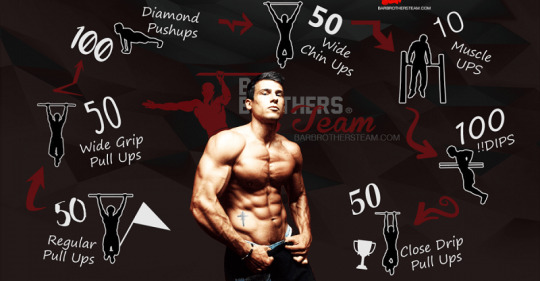
Welcome to our guide to 10 easy home workouts that will help you get fit and healthy, no matter your fitness level. With many of us spending more time at home due to the COVID-19 pandemic, it's important to find ways to stay active and maintain our health and well-being. Fortunately, you don't need a gym membership or expensive equipment to get in a good workout – all you need is your body and a little bit of space.
In this article, we'll take you through 10 easy home workouts that can be done in the comfort of your own home. These workouts require little to no equipment and can be adapted to suit different fitness levels. Whether you're a beginner or an experienced fitness enthusiast, there's a workout in this guide for you.
So, let's get started! With a little bit of dedication and commitment, these home workouts can help you get in great shape and feel your best.
Bodyweight HIIT: Create a high-intensity interval training (HIIT) workout that doesn't require any equipment. Include exercises like jumping jacks, burpees, mountain climbers, and squats, and have your audience do each one for 30-60 seconds, followed by a short rest period. Repeat for several rounds to get an effective cardio and strength workout.
Yoga Flow: Create a yoga flow that can be done at home with no equipment. Include poses like downward dog, sun salutations, warrior I and II, and tree pose. Add modifications for beginners and more challenging options for advanced yogis.
Tabata Training: Tabata is a form of interval training that involves doing 20 seconds of high-intensity exercise followed by 10 seconds of rest, for a total of 8 rounds. You can choose any exercises you like, such as jump squats, push-ups, or lunges, and repeat the circuit for a full workout.
Core Workout: Develop a core workout that focuses on strengthening the abdominal muscles. Include exercises like crunches, planks, and bicycle kicks, and offer modifications for different fitness levels.
Resistance Band Training: Resistance bands are a versatile piece of equipment that can be used for a full-body workout. Create a workout that targets different muscle groups using bands of varying resistance.
Pilates Mat Routine: Pilates is a great way to build strength and flexibility without any equipment. Develop a mat routine that includes exercises like the hundred, the roll-up, and the single-leg stretch.
Cardio Kickboxing: Create a cardio kickboxing routine that includes punches, kicks, and other martial arts-inspired moves. Add in some plyometric exercises like jump squats or burpees for an extra challenge.
Bodyweight Strength Training: Develop a strength workout that uses only bodyweight exercises. Include moves like push-ups, squats, lunges, and dips, and increase the intensity by adding in some plyometrics or isometric holds.
Dance Fitness: Dancing is a fun way to get a cardio workout in. Create a routine that incorporates different dance styles, like hip hop, salsa, or Bollywood, and set it to upbeat music.
Full-Body Workout: Develop a full-body workout that targets all major muscle groups. Include exercises like push-ups, lunges, rows, and shoulder presses, and vary the intensity by adjusting the number of reps and sets.
0 notes
